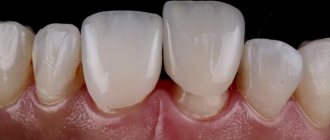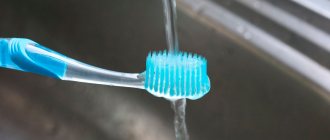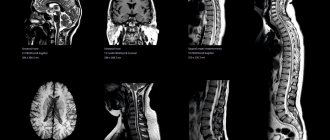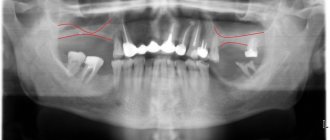Chief editor of the site:
Snitkovsky Arkady Alexandrovich
Chief physician of the professorial dentistry “22 Century”, dentist, orthopedic dentist
Author of the article:
Scientific team of dentistry “22 Century”
Dentists, candidates and doctors of medical sciences, professors
Types of Dental Implants
Today, every modern dental clinic offers such a service as dental implantation. Let's look at the basic terms and concepts, as well as types of dental implants.
Basic terms
- A dental implant is a structure that is installed into the jaw bone during surgery and replaces the roots of the teeth, and also serves as a support for prosthetics;
- An abutment is a supragingival structure that imitates a tooth stump. It can be integral with the implant (non-separable design) or as a separate structure (demountable design);
- The healing abutment is a supragingival intermediate structure. Essential for creating a beautiful natural gum margin. (in the case where the abutment and implant are a single whole, not used);
- Osseointegration is a direct structural and functional connection between living bone tissue and the surface of the implant implanted into it.
Which dental implantation method to choose?
The method, implant and type of prosthesis are selected individually after an examination; it is not chosen by the patient (although his wishes are listened to), but by a collegial surgeon, orthodontist and dental technician. Therefore, you need to contact specialists with many years of experience.
They take into account indications and contraindications for dental implantation based on X-ray and other studies, and simulate the implantation process using dental computer programs. However, they usually offer several options (crown - metal ceramics or zirconium dioxide, type of prosthesis, etc.), since the price of dental services depends on the materials used.
Implantation can be:
- Direct (performed immediately after tooth extraction);
- Delayed (3 months or more pass after tooth extraction).
Prosthetics can be performed simultaneously with the installation of an implant or also after a certain time (two-stage technique).
The choice of one or another implant or method of operation depends on the patient’s general condition , oral hygiene, the volume and quality of the jaw bone tissue, and the patient’s financial capabilities.
Techniques
Basic surgical techniques in orthodontics include one-stage and two-stage implantation.
Two-stage
Standard implantation, which can be performed in any dental office.
Stage 1
The gum flaps are cut and moved back, clearing the bone for the implant. An axial guide channel is created with a 2-2.5 mm drill, and it is expanded with a drill of a larger diameter.
When the root portion of the implant is screw-shaped, the bone is manually threaded using taps. Then the endosseous element is screwed in using the implant lead.
If cylindrical implants are used, the bed is formed using a reamer or a special cutter. When using combined implants, first the cylindrical part is formed using fissure burs, and then preparation for the plates is carried out.
The intraosseous part of the implant is installed just below the height of the alveolar ridge. To protect against bone tissue getting inside the implant, the canal is closed with a plug, the gum flaps are raised and sutured.
Stage 2
It is carried out no earlier than 2-3 months, when it becomes clear that the root-like part of the implant is successfully engrafting. After activation of local anesthesia, the gum is excised again and the plug is removed. After flushing the canal, the upper part of the implant is screwed in. Additional incisions are sutured.
Two-stage implantation technique
One-stage
It differs from the two-stage procedure in that after implantation the entire implant protrudes into the oral cavity. It is installed by cutting the gum, or in a simplified way. This is the so-called bloodless implantation technique (no stitches are applied):
- The mucous tissue and periosteum are excised with a perforator.
- The bone bed is prepared with a drill, circular saw, or fissure bur.
- The implant is installed.
These methods of dental implantation give the same long-term results. If there are any doubts about the patient’s compliance with hygienic requirements for the cleanliness of the oral cavity, they resort to a two-stage procedure. Then the possibility decreases:
- accumulation of food plaque and bacteria on the surface of the implant;
- development of the inflammatory process;
- implant rejection.
If oral hygiene is maintained, the implant is installed in one go.
Dental implant materials
Dental implants
Depending on what material the implant is made of, there are:
Metal
Most dental implants are made of titanium and its alloys. The peculiarity of this material is such that the body does not recognize it as something foreign. In this regard, excellent biocompatibility is noted. It is also characterized by high strength and lack of toxic effects.
Ceramic
Ceramics occupies a special place in dentistry in terms of aesthetics. Its color and light transmission allow it to imitate natural teeth as closely as possible. But when it comes to implantation, aesthetics are not so important. Biocompatibility comes first. The interaction between ceramics and bone tissue has not been fully studied. Thus, we cannot say affirmatively and positively about osseointegration. Therefore, the choice of this type of material remains a big question .
Contraindications
Dental implantation is an invasive procedure that has certain risks. There are a number of contraindications for its implementation:
- bone atrophy: in this case, volume is first increased, or special implants are used that are implanted into the zygomatic bone;
- some mental illnesses: consultation with a psychiatrist is required;
- oncological pathologies;
- diabetes mellitus: patients with this diagnosis have a high risk of rejection of implant rods;
- severe diseases of the hematopoietic system, heart pathologies;
- any infectious diseases in acute form: it is necessary to achieve remission or recovery;
- severe periodontitis and periodontal disease;
- HIV infection and other immunodeficiency conditions: the implant tooth simply does not take root;
- pregnancy and breastfeeding: hormonal changes can affect the healing of implant pins, so intervention is postponed for some time;
- age under 18 years: implants are not installed until adulthood due to the fact that the dental system has not fully formed.
All contraindications are identified at the first stage during questioning and examination, and additional diagnostic methods also help.
According to the form they are distinguished:
Cylindrical
Thanks to the porous structure, a strong connection with the surrounding bone tissue is ensured. Currently, cylindrical implants are produced dismountable, designed for a two-stage application method.
Screw
In order to have an idea about these implants, let's look at the structure of the jaw bone.
The cortical plate is a kind of shell, the strongest, consisting of 95% mineral salts.
Spongy bone is the main layer of bone tissue, represented by crossbars and septa with many small vessels (capillaries). It is in this section that the roots of the teeth are located.
The basal layer is a continuation of the spongy layer, but the septa are located closer with a small number of vessels. Maximum strength and thickness .
Screw implants have a number of advantages:
- Cone shape;
- They are installed in place of the roots of natural teeth, that is, in the spongy layer. When chewing, they also transfer the load to the surrounding bone tissue, thereby maintaining metabolic processes in it at the proper level. It turns out that this type of implant is the most physiological;
- The presence of threads, which increases the area of contact with bone tissue, and, consequently, faster osseointegration is noted;
- They can be collapsible or non-removable, one- and two-stage, have a smooth, rough surface or a coating of bioactive materials;
- They come in different diameters and lengths, which expands the indications for their use.
One of the main conditions for the use of screw implants is the presence of a sufficient volume of high-quality bone. But even if there is a lack of it, it is possible to establish them with the help of additional operations (sinus lifting, bone grafting, etc.). Only the duration of treatment and recovery will change.
In today's market you can see many implant manufacturers. Let's take a look at the leading representatives.
Questions and answers
Is it painful to have implants installed?
Implantation is a full-fledged operation. It is performed under local anesthesia or general sedation. The choice of drug and method of administration is the prerogative of the doctor. After the operation, the dentist will prescribe adequate pain relief.
Is there a difference in installation between the upper and lower jaw?
Yes, the roots of the teeth of the upper jaw abut or enter the upper maxillary sinus. Before implantation, an operation is required to lift the bottom of the sinus and build up bone tissue. In addition, in some cases, zygomatic implants are used. Bone augmentation to install a pin in the lower jaw may not be performed. This depends on the results of the patient's examination.
At what age are implants placed?
From 18 years and older. Old age is not a reason for refusing to install a dental structure. The procedure is allowed at both 70 and 80 years of age.
Is it possible to do an MRI after implantation?
Dental implantation is not a contraindication for either MRI or CT. The dental structure is made of titanium alloy. During the procedure, it will not heat up, will not move, and will not cause pain.
Advantages and features:
- Each implant is covered with a unique TiUnit material, thanks to which the process of osseointegration occurs much faster (in its structure and composition it is very close to bone tissue);
- 3D planning of the operation, which is the key to the accuracy and high aesthetics of the finished structure;
- Due to the design features of the thread and the body of the implants themselves, tissue trauma is minimal;
- A wide range of implants in diameter and length makes it possible to install them even in the most seemingly difficult clinical situations;
- Simplicity, logic and accuracy in the surgical protocol (operation);
- All Nobel implants have identification numbers. Fake is impossible.
The only downside worth noting is the high cost.
Pros and cons of implants
Installation of pins in bone tissue requires the experience and practical knowledge of a maxillofacial surgeon and implantologist. And fulfillment of all his prescriptions by the patient. In addition, before implantation, the oral cavity is sanitized and any inflammatory processes are stopped.
| pros | Minuses |
|
|
Table. Advantages and disadvantages of implants
ASTRA TECH implants
ASTRA TECH implants
The system was developed by Swedish scientists and is popular in many countries.
Advantages and features:
- Made of the highest class titanium, which has excellent biochemical qualities;
- Modified OsseoSpeed surface, which accelerates the process of osseointegration;
- The connection of the implant to the Conical Seal Design abutment is located below the gum level, which allows for a more even distribution of the chewing load;
- Patented microthread in the upper part of the implant (in the neck area), which also improves the distribution of chewing pressure;
- The company provides a lifetime guarantee.
Among the disadvantages, high cost can be noted.
Hi-Tec implants
Hi Tec Implants is one of the leading Israeli companies that has been producing a wide range of implants for over 20 years. During this period, the company has established itself as a representative of quality materials at an affordable price .
Advantages and features:
- A wide selection of types of structures, which allows you to choose the optimal one for each specific clinical situation;
- The implants are made of the highest quality titanium;
- Simple surgical protocol (operation progress);
- Having our own full-cycle production allows us to ensure a high level of quality control of dental implants (implants) and a reasonable cost.
Thus, this implantation system combines high quality and reasonable cost. Among mid-level implants, Hi-Tec takes first place.
Prices for dental implants in Moscow
As with any other area of dentistry, the cost of dental implants varies widely. On average, the price for installing one dental implant in Moscow ranges from 15,000 in economy class dentistry to 80,000 rubles in a VIP clinic. Moreover, the budget required for the implantation procedure as a whole largely depends on the cost of the implant. In order to understand how much a dental implant costs and which price is acceptable, which is unreasonably high, and which is suspiciously low, it is necessary, first of all, to understand what it consists of.
Lamellar
Plate implants
The intraosseous part is a wide thin plate with a textured surface (macrorelief in the form of a snake or corrugated structure) and holes. Such implants are practically not used, as they have more disadvantages than advantages.
Firstly, they differ in shape from the roots of natural teeth, thus they are not able to withstand and distribute the chewing load in the proper volume. Therefore, the service life is not long.
The only positive thing that can be noted is the low cost.
Types of implants
Currently, many types of dental structures have been developed that will help solve any patient’s problem. The choice of implant is the prerogative of the doctor. And it depends on the diagnosis and individual characteristics of the patient.
By purpose
There are 2 groups of dental structures – intraosseous and extraosseous. The first ones are made of titanium alloys. They reproduce the shape of the tooth and are made with or without threads. Their surface is specially treated to increase the speed of osteosynthesis. Screw implants are the most common.
Screw implants
Extraosseous structures are indicated when it is impossible to use intraosseous titanium pins.
Types of dental implants:
- subperiosteal - indicated for insufficient bone tissue. Allows you to avoid sinus lift surgery. Installed in the periosteum, between the bone structures and the gum;
Subperiosteal implants
- stabilizing – help preserve the tooth root, making it longer. They are classified as temporary structures and are currently practically not used;
Stabilization implants
- intramucosal - installed in the mucous membranes, bone tissue is not affected. Used to attach removable dentures.
Intramucosal implants
According to the type of fixation in the bone
Based on the method of fixation in tissues, root, basal and zygomatic dental structures are distinguished.
Root - the most popular, are a threaded cylinder. Can be installed if there is a lack of bone tissue.
Basal - began to be used relatively recently. They are installed in deeper bone structures (basal bone). Their installation does not require sinus lift surgery; they are suitable for one-stage implantation and better distribute the load during chewing.
Zygomatic pins – used in cases where other methods and types of dental implants are contraindicated. They are mounted in the zygomatic bone, which makes it possible to restore the upper dentition in case of complete atrophy of bone tissue.
By design
There are one-piece, two-piece and mini-implants. The former are used for express methods of restoring a lost molar, incisor or canine. In them, the abutment is already fixed to the intraosseous part of the device. When installed above the gum, the top of the one-piece implant remains. You can immediately install a crown on it.
Two-piece ones consist of a titanium pin itself, which is immersed in the bone. Several months should pass after its installation. This implant has a recess onto which the abutment is attached. This allows, if necessary, to replace the upper part of the structure without removing the pin. This is the most popular type of implant.
One-piece and two-piece implants
The smallest dental structures are mini-implants. Their sizes range from 1.8 to 2.4 mm. The installation is painless and takes root within a month. The crown or prosthesis is installed 3 days after implantation. They are used, as a rule, for attaching removable dentures.
Mini implants
By class and manufacturer
Today, there are 3 classes of titanium pins on the dental construction market - economy, medium and premium segment.
Premium class implants are distinguished by higher quality materials and have greater capabilities. They are recommended for use in difficult cases. They are easier for the dentist to work with. In addition, the manufacturer offers many additional elements, crowns, and abutments.
Well-known manufacturers of titanium structures in dentistry:
- Straumann and Nobel Biocare (Switzerland);
Straumann implants
- Denstply – products under the TM Ankylos, Xive Friadent (Germany), Astra Tech (Switzerland);
- MIS, AlphaBio, Ards (Israel);
MIS implants
- MegaGen
MegaGen implants
Economy and mid-range segments are no worse in quality. And you need to understand that when implanting, the main thing is the knowledge and skills of the dentist.
Combined
The shape and size of such implants are determined strictly individually, depending on the number of lost teeth, the thickness of the jaw bone and other factors.
Highlight:
- Lamellar-root-shaped;
- Disc: for weak, atrophied bone in cases where bone grafting is impossible;
- Transosseous: used for severe atrophy of the jaw bone, installed through an incision in the chin area;
- Ramus-frame dental implants: a fairly extensive design that covers almost the entire jaw. It is used for severe bone atrophy and serves as a support for both removable and fixed prostheses.
Such implants are used only in cases where screw installation is not possible. The operation requires more time, the process is complex and traumatic . The recovery period is much longer, and the service life is short.
Lifespan of dental implants
Although implantation is significantly more expensive than traditional prosthetics, with a long-term calculation the costs are equalized. This is due to the fact that traditional bridges, crowns, clasp or nylon dentures need to be replaced on average every 5 to 7 years, and the supporting teeth will have to be ground down again each time. How long does a dental implant last? The minimum service life of a dental implant is about 30 years, and if all the doctor’s instructions are followed, the implant will last you a lifetime. Most manufacturing companies, including world industry leaders, who invest considerable funds in the latest developments, provide a multi-year or even lifetime warranty on their products. This applies to the part of the structure that is located inside - that is, the root (base plate, etc.) and the abutment. A crown installed on an abutment has a more limited service life, but it is also significantly longer than that of a traditional prosthesis installed on ground natural teeth. This is on average 10 – 15, sometimes 20 years. If we are talking about implantation for a young person, then, of course, he will be interested in what happens to implants in old age. With proper care and preventive examinations, nothing should happen to the artificial root.
Basal
Such implants are installed in the basal layer of the jaw bone tissue. It is denser than the spongy layer. This ensures good primary stabilization. Prosthetics can be performed 3-5 days after the operation.
The intraosseous part and the abutment are a single unit. Therefore, it is impossible to correct the supragingival part after installing the implant. There are many cases of loss of aesthetics - dentures look unnatural and do not adhere well to the periodontal tissues.
The process of installing basal implants is not very complicated and traumatic, but basal implants have more “cons” than advantages.
Firstly, this is not titanium (after installing this type of implant, the orthopedic doctor simply bends them with forceps, creating parallelism), but it is titanium that has the property of “fusing” with the bone.
Secondly, with Basal implantation, osseointegration does not occur and it is rather the denture that holds the implants in the bone, and not vice versa.
Thus, at first glance, there are more advantages of basal implants, but the disadvantages are so significant that their use is questionable.
Implant failure - what to do in this case
Rejection is an inflammatory process that is accompanied by the destruction of bone tissue. Causes pain, swelling of the gums, bleeding, and purulent exudate.
Types of rejection:
- early – begins immediately after surgery – the main reason is a violation of implantation protocols;
- medium-term – 1.5–2 years after installation of the pins. The reasons are various – from hormonal imbalance to increased chewing load on the implant;
- later – after 2.5–3 years – the main reason is violation of hygiene rules.
Rejection is an extremely rare complication after the installation of a dental structure. If any alarming symptoms appear, you should contact a medical facility.











